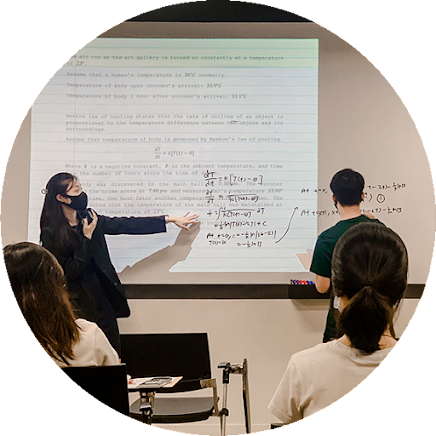Useful tips to prepare for foundation math PSLE paper
Foundation math PSLE paper problems with two lines might be intimidating for some people; imagine how much more so for kids when they must fill a lot of space. How do they analyse the query and try to come up with the right response? Topics are taught at Grade Solution in accordance with Concepts. Your child would be able to quickly scan the question, identify the essential terms, and determine which approach is being tested. Is it the internal transfer (constant total) technique, the group number value method, the excess and shortfall method, etc.?
Certain subjects will be simpler for some students than
others, and vice versa. It makes sense that each youngster would interpret each
concept differently. Your youngster will be able to approach the questions
deftly if they have a solid understanding of the problem-solving ideas.
Here are a few pointers for passing the foundation
math PSLE paper.
Time management: avoid the difficult tasks first
Read, examine, and note. Students should be able to read
the question, analyze it, and then recognize the approach it is testing in less
than 30 seconds. Your child will be able to estimate the number of steps
needed, and the complexity of the model involved, and determine if it would
take 2, 3, 4, or more than 5 minutes to solve the problem once they have
decided which approach to apply to solve the problem. This additional
information aids your child in making time-efficient plans to earn as many
points on paper 2 as possible while still having time to look for and correct
thoughtless errors. Of course, lots of timed practice is necessary to develop
reading, analysis, and identification skills. So, begin your timed
assignments!
Choose the Correct Concept
Although the majority of foundation math PSLE paper problem
sums appear to be distinct at first glance, they essentially test the same
idea. In fact, your youngster would have encountered at least half of the
queries. The names, the objects, and the numbers would be the only variables.
It can be resolved in the exact same way. Using keywords is a quick way to find
the proper topic.
Never leave a question unanswered.
Even if your thoughts is empty, your paper shouldn't be.
After reading the question, your child might not be able to immediately see the
solution, but he or she will almost certainly be able to generate at least one
number statement based on the numbers provided in the question. Make a note of
that! Your child would at least receive some points for writing certain
workings.
Students who are requested to clearly demonstrate their workings in the space allocated for this purpose for questions in foundation math PSLE paper do receive method marks. If your youngster can master the basic steps, even if they don't lead to the final solution, they have demonstrated some knowledge. Any point gained is preferable to receiving a score of 0 on the question.
Check your work carefully.
In contrast to languages, math lets you verify that all
of your work is accurate.
Working backwards with the textual answer you entered in would allow you to instantly know if your response is right, even though it is less complicated than reverse engineering. Your response is correct if you arrived at the same figures as those listed in the question. Your answer is incorrect if you were able to generate a different set of figures from those mentioned in the question.




Comments
Post a Comment